Did you know that there are over 400 species of flycatchers? These captivating birds, known for their flycatching behavior, can be found in various habitats across the Americas, from the southwestern United States to Argentina. Flycatchers have distinct nesting habits, dietary preferences, migratory patterns, and conservation statuses, making them a fascinating subject for birdwatchers and wildlife enthusiasts.
In this comprehensive guide, you’ll discover everything you need to know about attracting and identifying flycatcher species. Whether you’re a seasoned birdwatcher or just starting out, understanding their nesting habits, diet, migratory patterns, and conservation status will enhance your birdwatching experience and contribute to the conservation of these remarkable birds and their habitats. So grab your binoculars and get ready to explore the fascinating world of flycatchers!
Identifying Flycatchers by Appearance and Behavior
Flycatchers are a diverse group of birds known for their similar appearances, making identification a challenge for birdwatchers. However, by focusing on certain physical characteristics, vocalizations, and foraging behavior, you can learn to distinguish between different species of flycatchers.
Physical Characteristics
Physical characteristics play a crucial role in flycatcher identification. Paying attention to plumage color, patterns, and markings can help you differentiate between species. Some key physical features to observe include:
- Plumage color and pattern: Note the colors and patterns on the head, back, wings, and tail of the flycatcher. Different species may have distinct color combinations and markings.
- Size and shape: Look at the overall size and shape of the bird, including body structure and wing length. Comparing these characteristics can help identify specific flycatcher species.
- Bill shape: Examine the shape and size of the bill. Some flycatchers have slender, pointed bills, while others have wider bills.
Vocalizations
Another useful tool for flycatcher identification is their vocalizations. Each species of flycatcher has its own unique song or call, which can be distinctive and recognizable. By familiarizing yourself with their vocalizations, you can identify flycatchers even when they are hidden from view. You can listen to recordings or use birding apps to learn their songs or calls.
Foraging Behavior
The foraging behavior of flycatchers can provide valuable clues for identification. These birds are known for their flycatching behavior, perching on branches or open spaces and catching flying insects on the wing. Observing their hunting techniques, perching preferences, and flight patterns can help you narrow down the species.
Some flycatchers may have distinct foraging behaviors, such as hovering in mid-air or sallying out from a perch to catch insects in flight. These behaviors can be unique to certain species, aiding in their identification.
By considering the physical characteristics, vocalizations, and foraging behavior of flycatchers, you can enhance your ability to identify different species. Keep in mind that field guides, birding apps, and online resources provide valuable visual and auditory references to assist you in the identification process.
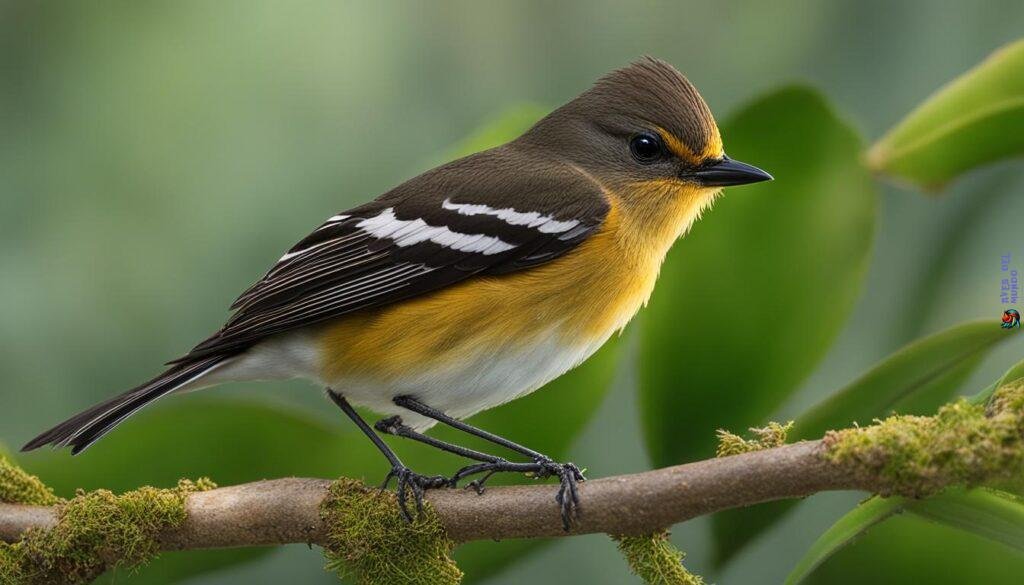
| Flycatcher Species | Physical Characteristics | Vocalization | Foraging Behavior |
|---|---|---|---|
| Eastern Kingbird | Black head and back, white underparts, pointed bill | Sharp, high-pitched call | Sallies out from a perch to catch insects |
| Great Crested Flycatcher | Olive-brown upperparts, yellow belly, rufous tail | Whistled «wheep» call | Perches on high branches, flycatches from an exposed perch |
| Scissor-tailed Flycatcher | Pale gray upperparts, white underparts, long scissor-like tail | Musical twittering songs | Hovers and glides while catching insects |
Attracting Flycatchers to Your Yard
If you want to attract flycatchers to your yard, there are several steps you can take. By providing the right resources and creating a suitable habitat, you can encourage these delightful birds to visit and even nest in your yard.
1. Bird Feeders
One effective way to attract flycatchers is by setting up bird feeders. Fill your feeders with a variety of insects and fruits, such as mealworms, ants, and diced berries. Flycatchers are insectivorous birds, and a diverse food source will help entice them to your yard.
2. Nesting Boxes
Installing nesting boxes in your yard can provide flycatchers with suitable nesting opportunities. Choose nesting box designs that mimic their natural nesting habitats, such as boxes with small entry holes and sufficient internal space. Place the boxes in locations near rivers or streams, as flycatchers tend to prefer nesting close to water sources.
3. Native Plants
Landscaping your yard with native plants is another effective way to attract flycatchers. Native plants attract insects, which are a vital food source for flycatchers. Include a variety of flowering plants and shrubs that provide nectar and berries throughout the year. Creating a diverse and insect-friendly environment will help draw these beautiful birds to your yard.
By implementing these strategies, you can increase the chances of attracting flycatchers to your yard and create a welcoming environment for these fascinating birds.
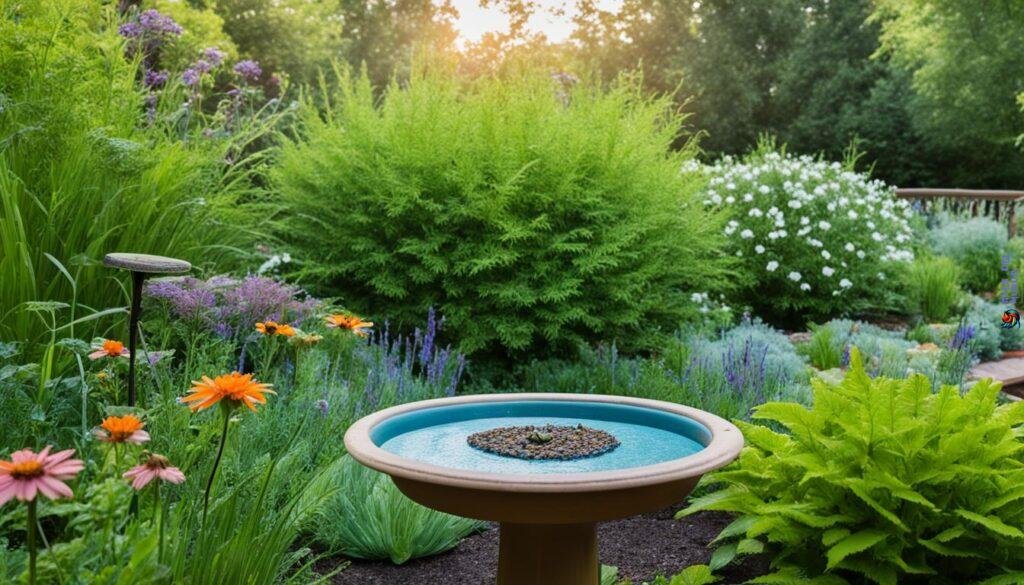
Flycatcher Nesting Habits
Flycatchers have unique nesting habits that contribute to their successful reproduction and survival. Many species of flycatchers prefer to nest in cavities found in trees, often utilizing old woodpecker holes as their nesting habitat.
When constructing their nests, flycatchers use a variety of materials to create a cozy and secure environment for their eggs and nestlings. These materials include fur, feathers, grass, twigs, moss, and even snake or lizard skins. By incorporating such diverse materials, flycatchers ensure that their nests are well-insulated and camouflaged.
By understanding flycatchers’ nesting habits, birdwatchers can increase their chances of locating and observing flycatcher nests. Paying attention to signs of cavity nesting, such as the presence of woodpecker holes or observing flycatchers carrying nesting materials, can provide valuable clues.
Observing flycatcher nests can be a remarkable experience, allowing birdwatchers to witness the intricate nesting behaviors, incubation, and parental care provided by these remarkable birds.
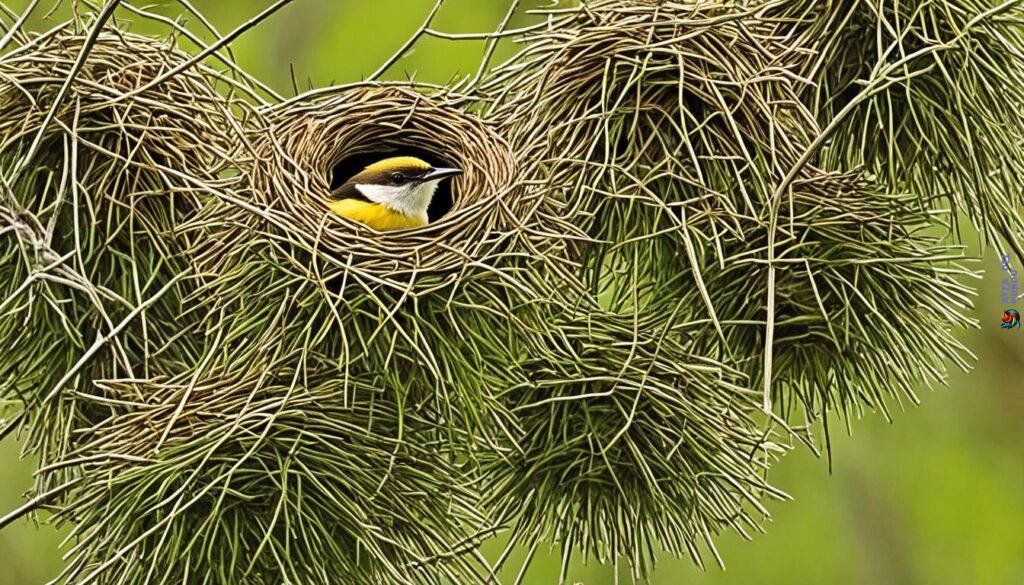
Flycatcher Nesting Materials:
- Fur
- Feathers
- Grass
- Twigs
- Moss
- Snake skins
- Lizard skins
«Flycatchers utilize a wide range of materials to construct their nests, ensuring that the nests are well-insulated and blend seamlessly with their surrounding environment.»
Dietary Preferences of Flycatchers
Flycatchers are fascinating birds that primarily feed on flying insects, making them valuable insectivores in the ecosystem. Their agile flight and acrobatic movements allow them to catch insects in mid-air, showcasing their remarkable hunting skills. However, while flycatchers are mainly insectivorous, some species also supplement their diet with fruits and berries, adding variety to their food sources.
Understanding the dietary preferences of flycatchers can be beneficial for attracting these birds to your yard or providing suitable food sources in their natural habitats. By offering an assortment of insects, such as flies, mosquitoes, and beetles, you can entice flycatchers with their favorite delicacies.
In addition to insects, providing a variety of fruits and berries can act as an attractive supplement to their diet. Flycatchers may be drawn to fruits such as berries, cherries, or figs, which offer a source of energy and nutrients. Creating a bird-friendly environment with diverse plant species can ensure a continuous supply of fruits and berries for these avian visitors.
Tip: To attract flycatchers to your yard, create a bird-friendly space by incorporating plants that attract flying insects and provide fruits and berries. This will not only establish a suitable food source but also provide a natural habitat for flycatchers to thrive.
To illustrate the dietary preferences of flycatchers, here is a breakdown of their main food sources:
| Flycatcher Diet | Main Food Sources |
|---|---|
| Insects | Flying insects such as flies, mosquitoes, beetles, and moths. |
| Fruits and Berries | Assorted fruits and berries, including cherries, figs, and berries. |
By providing a diverse range of food sources that cater to flycatchers’ insectivorous nature as well as their supplemental fruit and berry preferences, you can enhance the attraction of these fascinating birds to your yard or local habitat. Observing flycatchers as they feed on flying insects or enjoy the occasional fruity treat can offer rewarding experiences for any bird enthusiast.
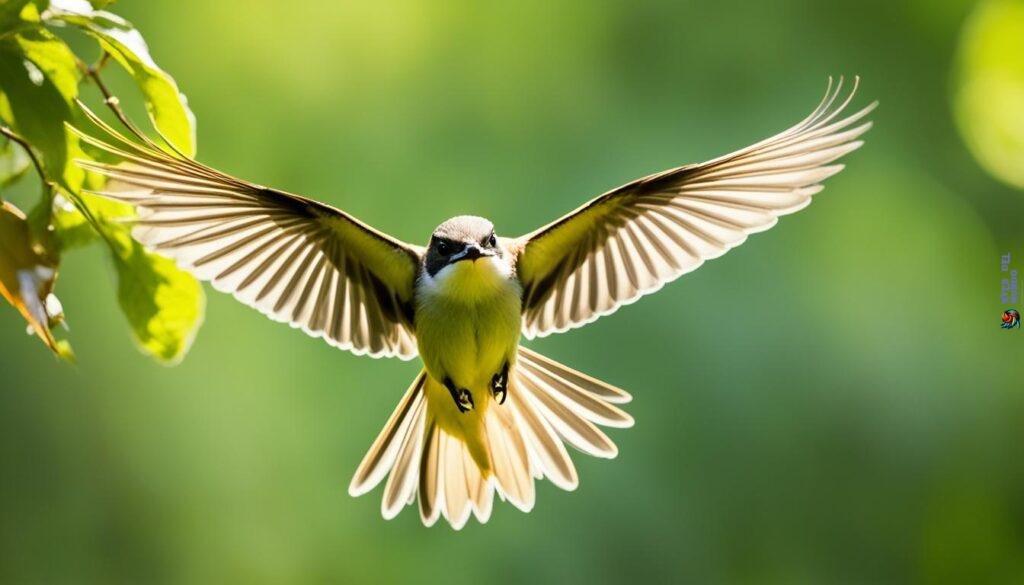
Migratory Patterns of Flycatchers
Flycatchers are known for their diverse migratory patterns, with some species embarking on long journeys between their breeding grounds and wintering grounds. These neotropical migrants undertake epic migrations, traveling thousands of miles to find suitable habitats and resources.
Understanding the migratory patterns of flycatchers can provide valuable insights into their annual movements and enable birdwatchers to anticipate their arrival during different seasons. Here’s a closer look at some key aspects of flycatcher migration:
Breeding Range
Flycatchers have breeding ranges that span across the Americas, from the southern regions of the United States to Argentina. Each species has specific locations where they build their nests and raise their young. Some flycatchers prefer forested areas, while others thrive in grasslands, wetlands, or even urban environments.
Wintering Grounds
During the winter months, many flycatcher species make their way to Central and South America, known as their wintering grounds. These regions provide the necessary food sources, such as insects and fruits, to sustain the birds during the colder months. Flycatchers can be found in various tropical habitats, such as rainforests, savannas, and coastal areas.
Migration Routes
The migration routes taken by flycatchers vary depending on their breeding range and the location of their wintering grounds. Some species undertake long-distance migrations, traversing continents and crossing major bodies of water. Others have shorter migration routes, moving within a more localized range.
Timing of Migration
The timing of flycatcher migration is closely tied to changes in the availability of food and favorable weather conditions. Generally, migration occurs in spring and fall, with flycatchers returning to their breeding grounds during the warmer months and heading south for the winter. The exact timing can vary among species and even within populations.
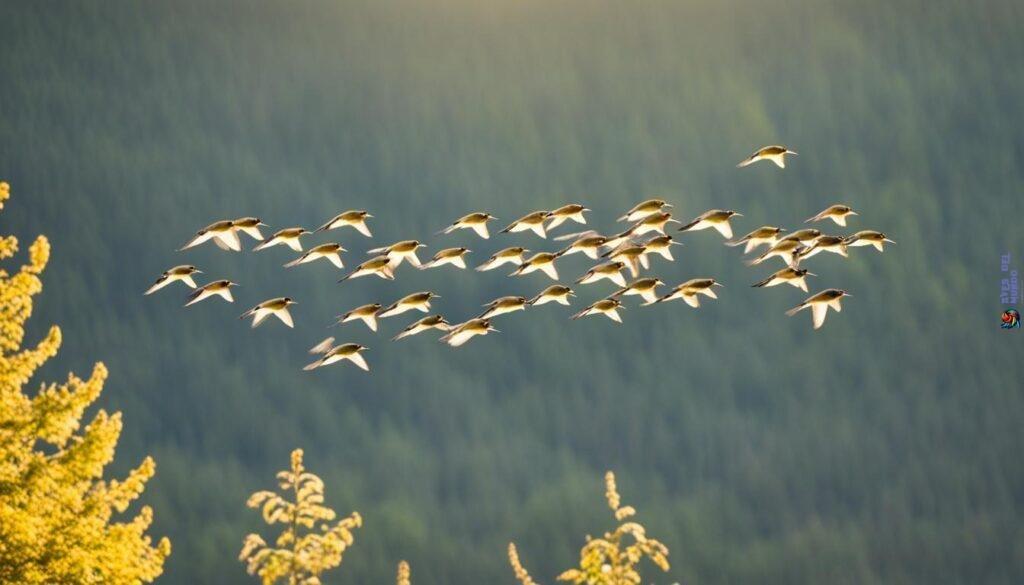
Notable Flycatcher Migrations
Some flycatcher species are known for their remarkable migratory journeys. For instance:
- The Western Kingbird travels from as far north as Canada to its wintering grounds in Central America and northern South America.
- The Olive-sided Flycatcher travels an impressive distance, breeding in North America and migrating all the way to South America for the winter.
- The Eastern Wood-Pewee is a long-distance migrant, breeding in eastern North America and spending the winter in the Amazon rainforest.
| Flycatcher Species | Migratory Range | Wintering Grounds | Migration Distance |
|---|---|---|---|
| Western Kingbird | Canada to Central and South America | Central and Northern South America | Thousands of miles |
| Olive-sided Flycatcher | North America to South America | South America | Thousands of miles |
| Eastern Wood-Pewee | Eastern North America | Amazon Rainforest | Thousands of miles |
Understanding the migratory patterns of flycatchers is crucial for their conservation. By preserving their breeding and wintering habitats and ensuring the availability of food resources along their migration routes, we can support healthy populations of these remarkable neotropical migrants.
Conservation Status of Flycatchers
When it comes to the conservation of flycatchers, their status varies among species. While some populations thrive, others face significant threats due to habitat loss and degradation. These threats are primarily driven by human activities such as deforestation, urbanization, and agriculture. As a result, certain flycatcher species have been classified as threatened or endangered, highlighting the urgent need for conservation efforts.
Flycatchers play a vital role in ecosystems, controlling insect populations and contributing to the overall health of their habitats. By conserving these species, we can help maintain the delicate balance of nature and ensure the survival of these unique birds.
Threatened Flycatcher Species
Several flycatcher species are considered threatened or endangered. These include:
| Flycatcher Species | Conservation Status |
|---|---|
| Black-capped Vireo | Endangered |
| Southwestern Willow Flycatcher | Endangered |
| Golden-cheeked Warbler | Endangered |
| Least Flycatcher | Threatened |
These species face particular challenges due to habitat loss and other factors affecting their reproductive success. Conserving these flycatchers is crucial for the preservation of biodiversity and the overall health of ecosystems.
Conservation Efforts
To protect threatened flycatcher species and their habitats, various conservation organizations and initiatives are working tirelessly. These efforts aim to:
- Promote habitat restoration and protection in key flycatcher habitats
- Implement sustainable land management practices to preserve suitable nesting and foraging environments
- Establish protected areas and wildlife corridors to ensure safe passage and breeding grounds for flycatchers
- Conduct research to better understand flycatcher populations and their conservation needs
- Engage local communities and raise awareness about the importance of flycatcher conservation
By supporting these conservation initiatives and participating in responsible birdwatching practices, you can contribute to the long-term survival of flycatcher species and the preservation of their habitats.

Flycatcher Habitats
Flycatchers can be found in a variety of habitats, adapting themselves to different environments across the Americas. Understanding their preferred habitats is essential for birdwatchers to locate and observe these captivating birds in the wild.
Woodlands
Many flycatcher species thrive in woodlands, where they find suitable nesting sites and abundant insect prey. These birds are often found perched on branches, darting out to catch flying insects with precision and agility. Woodland habitats provide the necessary cover and resources for flycatchers to flourish.
Stream Corridors
Flycatchers are frequently found near stream corridors, attracted by the abundance of insect activity in these riparian zones. The flowing water and vegetation along the streams create diverse ecosystems, supporting a rich food source for these insectivorous birds. Observing flycatchers in stream corridors can offer a unique birdwatching experience.
Deserts
Although less common, flycatchers can also be found in desert habitats. These hardy birds adapt to the arid conditions, seeking shelter in shrubs and feeding on insects that are specially adapted to desert environments. Spotting a flycatcher in a desert setting is a rewarding experience for birdwatchers exploring these unique landscapes.
Tropical Forests
Tropical forests are home to a vast array of flycatcher species, drawn to the diverse and abundant insect life found in these lush environments. These forests provide a thriving ecosystem for flycatchers, with their dense canopies and understory vegetation offering ideal foraging and nesting opportunities.
To illustrate the diverse habitats where flycatchers can be found, here is an image showcasing different flycatcher habitats:

Understanding the preferences of flycatcher species for specific habitats is key to discovering their presence and observing their behavior in the wild.
Tips for Birdwatching Flycatchers
If you’re eager to observe the captivating flycatchers in their natural habitats, these tips will enhance your birdwatching experience:
- Invest in Quality Binoculars: A good pair of binoculars is essential for spotting and observing flycatchers from a distance. Look for binoculars with a wide field of view and good magnification for optimal birdwatching.
- Use a Reliable Field Guide: A comprehensive field guide specific to the region you’re birdwatching in is invaluable for accurately identifying different flycatcher species. Look for guides with detailed descriptions, clear illustrations, and range maps.
- Study Behavior and Vocalizations: Understanding flycatcher behavior, such as their perching habits and unique foraging techniques, can help you locate and identify them more easily. Familiarize yourself with their distinct vocalizations to enhance your chances of spotting them.
- Learn Habitat Preferences: Flycatcher species have specific habitat preferences. Research and identify the habitats favored by the species you wish to observe. This knowledge will guide you to the right locations for better sightings.
- Be Patient and Observant: Flycatchers are small and often inconspicuous. Spend time observing their surroundings and patiently wait for their appearances. Look for movement and listen for their calls to spot these elusive birds.
- Join Birdwatching Groups or Workshops: Participating in birdwatching groups or workshops can provide valuable insights from experienced birdwatchers. Networking with other enthusiasts can also help you discover new flycatcher observation spots.
- Respect and Minimize Disturbance: When observing flycatchers, maintain a respectful distance to avoid causing stress or disturbance. Use binoculars and telephoto lenses to view them without intruding on their natural behaviors.
By following these birdwatching tips, you’ll have a greater chance of observing and identifying different flycatcher species in their natural habitats.
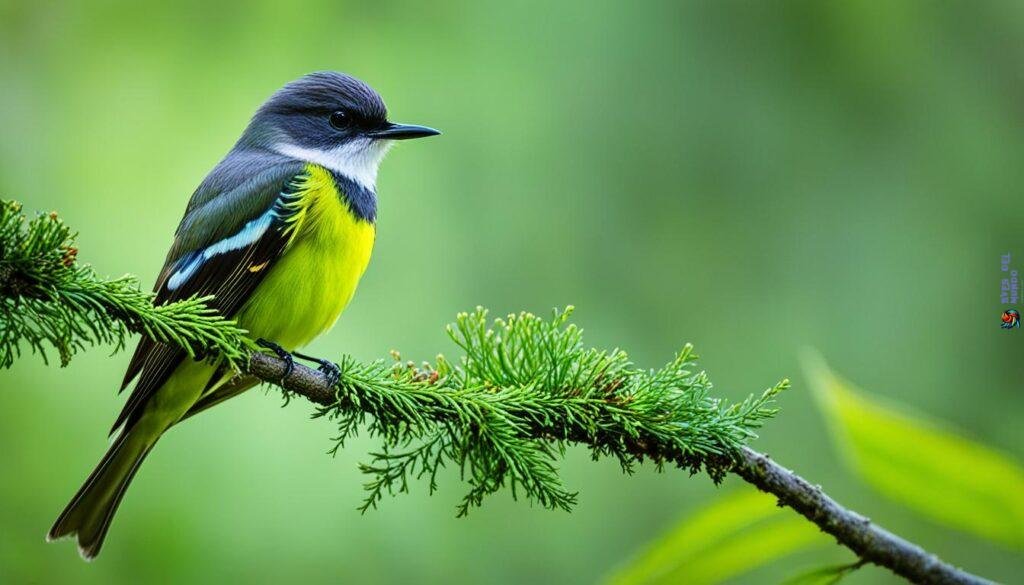
Notable Flycatcher Species
While there are over 400 species of flycatchers, three notable species capture the attention of birdwatchers with their unique characteristics: the scissor-tailed flycatcher, the eastern kingbird, and the great crested flycatcher.
Scissor-tailed Flycatcher
The scissor-tailed flycatcher (Tyrannus forficatus) is a striking species found primarily in the southern United States. What sets this bird apart is its distinctive long tail, which can exceed its body length. The male bird’s tail feathers can measure up to 8-14 inches in length. With its elegant appearance and graceful flight, the scissor-tailed flycatcher is a true spectacle to behold.
| Distinguishing Features | Habitat |
|---|---|
| The male has a pinkish-red crown and salmon-pink sides, contributing to its vibrant plumage. | Grasslands, open fields, and agricultural areas. |
| The female has a duller coloration, with a grayish head and back. | Deciduous woodlands during breeding season. |
| The long, scissor-like tail feathers are more pronounced in males. | Open spaces with perching sites like fence posts and utility wires. |
Eastern Kingbird
The eastern kingbird (Tyrannus tyrannus) is known for its fierce demeanor and territorial behavior towards larger birds. This flycatcher species is found in North America and is often seen perched on tree branches or utility wires.
| Distinguishing Features | Habitat |
|---|---|
| Black plumage on the head, back, and wings, with a white throat and underparts. | Open areas, including fields, meadows, and forest edges. |
| A characteristic white band on the tip of the tail. | Preferably near bodies of water, such as rivers, wetlands, or lakes. |
| A small, hooked bill suited for catching insects on the wing. | Urban environments, including parks and gardens. |
Great Crested Flycatcher
The great crested flycatcher (Myiarchus crinitus) stands out not only for its vibrant plumage but also for its peculiar nesting habits. This species is found throughout the eastern United States, as well as parts of Central America.
| Distinguishing Features | Habitat |
|---|---|
| Olive-brown upperparts and yellow underparts, with a cinnamon-colored throat. | Deciduous forests and woodlands. |
| A bold, lemon-yellow crest on the head, which can be raised or lowered depending on their mood. | Preferentially nest in tree cavities, including natural hollows and old woodpecker holes. |
| A distinctive call that resembles the phrase «wheep whew» or «wheep wew.» | Tolerant of disturbed habitats, including suburban areas and orchards. |
If you come across any of these notable flycatcher species during your birdwatching endeavors, take a moment to appreciate their unique characteristics and behaviors.
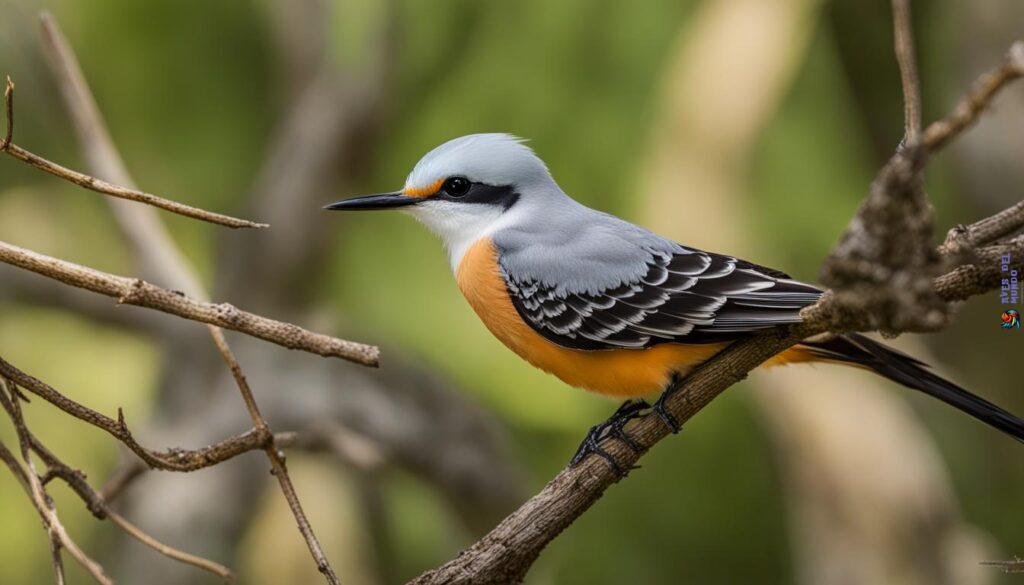
Flycatchers in Art and Culture
Flycatchers have captivated artists and writers, inspiring their work in various forms of visual art, literature, and folklore. These birds hold significant cultural symbolism, representing traits that resonate with human experiences and aspirations.
Symbolism in Art
Flycatchers often symbolize vigilance, adaptability, and resourcefulness in art. Their keen observation skills, agility in flight, and ability to catch insects mid-air resonate with qualities that humans admire and strive for.
| Art Form | Representations |
|---|---|
| Painting | Flycatchers are frequently depicted in vibrant colors, emphasizing their beauty and active nature. They are often shown perched on branches or capturing prey in mid-air. |
| Sculpture | Artists sculpt flycatchers to highlight their distinctive features and graceful movements. These sculptures convey a sense of freedom, agility, and vitality. |
| Printmaking | Flycatchers have inspired intricate and detailed prints, capturing their intricate plumage and the delicacy of their movements. |
Symbolism in Literature
Flycatchers have also played significant roles in literature, representing various themes and concepts. Their characteristics often provide metaphors that enhance storytelling and convey deeper meanings.
“The flycatcher emerged from the trees like a beacon of hope, its sharp eyes searching for insects, a symbol of diligence and perseverance.”
- Novels and Short Stories: Flycatchers are used as metaphors for resilience, adaptability, and the pursuit of knowledge in literary works, adding layers of symbolism to characters and their journeys.
- Poetry: Poets draw inspiration from flycatchers’ graceful movements and their ecological roles, interweaving their symbolism into verses that explore human emotions and connections with nature.
Folklore and Cultural Significance
Around the world, flycatchers have become part of folklore and cultural traditions, often carrying symbolic meanings influenced by local beliefs and experiences.
“According to indigenous folklore, the flycatcher is seen as a messenger from the spirit world, bringing news of renewal and positive changes.”
In some cultures, the arrival of flycatchers is associated with the changing seasons, marking transitions and the renewal of life. Their distinct calls and behaviors have inspired tales and proverbs that encourage adaptability and resilience.
The cultural significance of flycatchers reminds us that these birds transcend their scientific and ecological aspects, resonating deeply with human experiences, aspirations, and our interconnectedness with the natural world.

Flycatchers as Indicators of Ecosystem Health
Flycatchers, with their presence and behavior, serve as valuable ecological indicators, providing insights into the health and condition of the ecosystems they inhabit. As sensitive species, changes in flycatcher populations can indicate disturbances or imbalances in their habitats, making them essential for monitoring environmental changes and identifying potential issues.
Flycatchers are particularly sensitive to changes in their surroundings due to their specialized foraging behavior and habitat preferences. They rely on a stable and abundant supply of flying insects for food, and their population dynamics can reflect the availability of these crucial resources. Therefore, fluctuations in flycatcher populations can indicate changes in insect populations, which in turn can reflect ecosystem health and stability.
Studies have shown that declines in flycatcher populations can result from various factors, including habitat loss, degradation, and fragmentation, pesticide use, climate change, and competition with invasive species. Monitoring flycatcher populations can help detect early warning signs of environmental issues, allowing for timely intervention and conservation efforts to protect both these birds and the ecosystems they rely on.
_»Flycatchers provide valuable insights into the health of ecosystems. By monitoring their populations and understanding the factors that influence their abundance, we can gain a deeper understanding of the ecological well-being of the habitats they inhabit.»_
Significance for Conservation and Management
Understanding the ecological significance of flycatchers bears significant importance for conservation and management efforts. By recognizing these birds’ role as indicators, conservationists and land managers can use flycatcher populations as barometers for ecosystem health, guiding decision-making processes aimed at protecting and restoring habitats.
Monitoring flycatcher populations can provide early indications of ecological imbalances and threats to these birds’ habitats. This data can inform targeted conservation strategies, such as habitat restoration initiatives, the implementation of sustainable land management practices, and the establishment of protected areas for flycatcher species of concern.
Furthermore, recognizing the decline or recovery of flycatcher populations can contribute to setting conservation priorities and allocating resources effectively. By focusing efforts on safeguarding flycatchers and the ecosystems they depend on, we can help preserve biodiversity, maintain healthy food web dynamics, and support the overall stability and resilience of ecosystems.
Data and Tracking
Title: Flycatcher Population Trends in Select Ecosystems
| Ecosystem | Flycatcher Species | Population Trend |
|---|---|---|
| Northwestern Forests | Western Wood-Pewee | Stable |
| Great Plains Grasslands | Eastern Kingbird | Declining |
| Southwestern Riparian Areas | Southwestern Willow Flycatcher | Endangered |
| Tropical Rainforests | Tufted Flycatcher | Insufficient data |
The table above illustrates population trends of select flycatcher species in different ecosystems. It highlights the diversity of population dynamics and the importance of tracking and monitoring flycatcher populations across various regions and habitats.
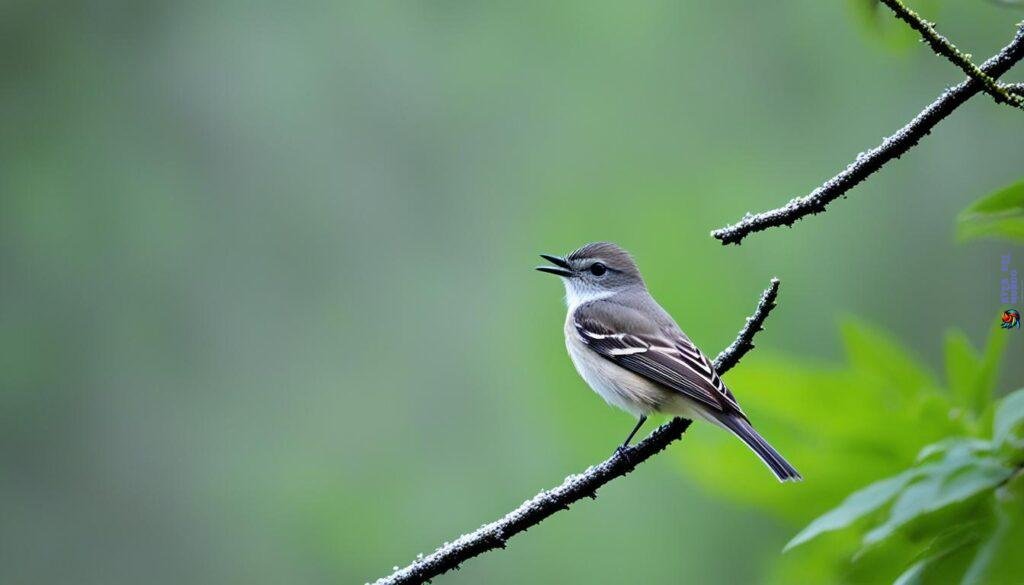
The provided image captures the beauty and diversity of flycatcher species. Their presence in different ecosystems and their significance as ecological indicators make them fascinating subjects for observation and research.
Conservation Efforts for Flycatchers
Conservation efforts play a vital role in safeguarding flycatcher populations and their habitats. These efforts aim to protect and restore their natural environments, implement sustainable land management practices, and establish protected areas. By supporting collaborative initiatives, engaging in research, and promoting community involvement, we can make a significant impact on flycatcher conservation and ensure the long-term survival of these remarkable species.
Protecting and Restoring Habitats
Habitat destruction and fragmentation pose significant threats to flycatcher populations. To address this, conservation organizations work to protect and restore the habitats that these birds rely on for breeding, nesting, and foraging. Through initiatives such as habitat restoration projects, reforestation efforts, and invasive species control, suitable habitats can be preserved and enhanced for flycatchers and other wildlife.
Implementing Land Management Practices
Collaboration between landowners, land managers, and conservationists is crucial for effective flycatcher conservation. Implementing sustainable land management practices, such as prescribed burning, rotational grazing, and watershed protection, can create favorable conditions for flycatchers while maintaining the ecological integrity of their habitats. By working together, we can ensure that flycatchers have access to suitable nesting sites, abundant food sources, and safe environments to thrive.
Establishing Protected Areas
Designating protected areas, such as nature reserves, national parks, and wildlife refuges, is essential for the long-term conservation of flycatcher species. These protected areas provide crucial breeding, migration, and wintering grounds for flycatchers, ensuring their survival throughout their annual life cycles. By establishing and properly managing these protected areas, we can preserve the diverse habitats that support flycatcher populations and contribute to overall biodiversity conservation.
Collaborative Initiatives, Research, and Community Engagement
Successful flycatcher conservation requires collaboration among various stakeholders, including scientists, conservation organizations, government agencies, and local communities. Collaborative initiatives bring together experts and enthusiasts to share knowledge, coordinate conservation efforts, and implement effective strategies. Ongoing research studies focus on understanding flycatcher behavior, population dynamics, and habitat requirements, guiding conservation actions and management decisions. Furthermore, community engagement and education programs raise awareness about flycatcher conservation, encouraging individuals to actively participate and contribute to the protection of these iconic birds and their habitats.

You can make a difference in flycatcher conservation by supporting organizations dedicated to their protection, participating in volunteer programs and citizen science initiatives, and advocating for policies that prioritize habitat conservation. Additionally, you can create a flycatcher-friendly environment in your own backyard by incorporating native plants, providing nesting boxes, and reducing pesticide use. Together, we can ensure a bright future for flycatchers and contribute to the preservation of our natural world.
Citizen Science and Flycatcher Research
Citizen science programs offer exciting research opportunities for birdwatchers and nature enthusiasts to actively contribute to flycatcher monitoring and conservation efforts. By participating in these initiatives, you can play a valuable role in gathering essential data on flycatcher populations, behavior, and distribution. Your contributions provide valuable insights into the ecological health and long-term survival of these fascinating birds.
Why Participate in Citizen Science?
Engaging in citizen science programs not only allows you to deepen your understanding of flycatchers but also empowers you to contribute to scientific research and conservation. By monitoring flycatcher populations and reporting sightings, you help researchers and conservationists collect valuable data that can be used to assess the health of flycatcher populations and inform conservation actions. Your efforts directly contribute to the scientific knowledge and conservation efforts surrounding flycatchers.
Research Opportunities
Citizen science programs provide diverse research opportunities for participants to get involved in flycatcher research. These may include:
- Monitoring flycatcher populations through surveys and data collection
- Participating in bird banding and tracking projects to study flycatcher migration patterns
- Assisting in nest monitoring and tracking breeding success
- Conducting behavioral observations to better understand flycatcher foraging and nesting behaviors
Participating in these research projects not only offers an opportunity to contribute to scientific knowledge but also allows you to gain firsthand experience in field research techniques and bird conservation. It’s an exciting way to connect with nature, learn from experts, and make a meaningful impact.
Flycatcher Research Contributions
By participating in citizen science programs, your contributions help enhance our understanding of flycatchers and directly contribute to their conservation. The data you gather and report can help researchers:
| Research Area | Contributions |
|---|---|
| Flycatcher Population Dynamics | Quantify population trends and assess changes in flycatcher abundance |
| Flycatcher Distribution | Determine the range and habitat preferences of different flycatcher species |
| Flycatcher Behavior | Study foraging behaviors, nesting habits, and reproductive success |
| Ecosystem Health | Assess the impact of habitat loss, climate change, and other threats on flycatcher populations |
Your contributions enable researchers to paint a comprehensive picture of flycatchers’ status, ecology, and conservation needs. This knowledge is critical for developing effective conservation strategies and ensuring the long-term survival of these remarkable birds.
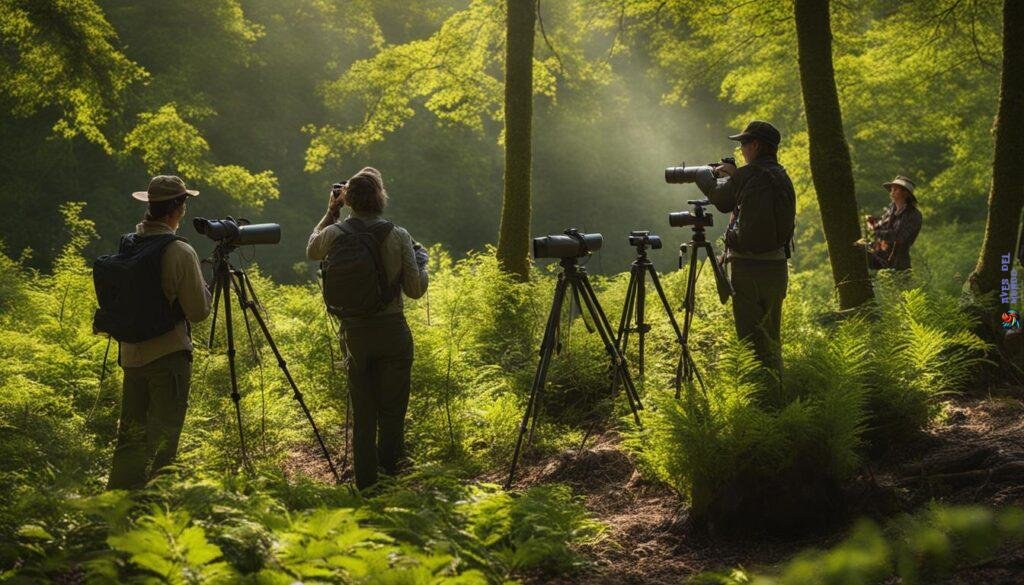
The Strength of Citizen Science
Citizen science is a powerful tool for engaging communities, raising awareness about bird conservation, and involving individuals of all backgrounds in scientific research. By participating in citizen science programs focused on flycatcher research, you become an active agent in promoting a deeper understanding of these birds and their conservation needs.
Engaging in citizen science initiatives allows individuals to actively contribute to scientific knowledge and conservation efforts.
Through your participation, you join a network of passionate individuals who share a common goal of safeguarding flycatcher populations and their habitats. By collaborating with researchers, citizen scientists like you can make a meaningful difference in preserving the beauty and ecological value of flycatchers for generations to come.
Flycatchers and Ecotourism
Flycatchers, with their beauty and ecological significance, attract birdwatching enthusiasts from around the world. Many regions have become popular ecotourism destinations due to the presence of diverse flycatcher species. Birdwatching tourism can have positive impacts on local economies, providing income for communities and promoting the conservation of flycatcher habitats.
Tips for Responsible Birdwatching
Responsible birdwatching plays a crucial role in protecting flycatcher species and their habitats. By following a code of ethics, you can minimize disturbance and ensure a positive birdwatching experience for yourself and the birds. Respecting boundaries and minimizing noise and disturbance are key considerations.
When birdwatching, strive to leave no trace. Avoid disturbing nesting sites and sensitive habitats. Keep a safe distance from the birds to avoid causing stress or interfering with their natural behaviors. Binoculars and telephoto lenses can help you observe them up close without intruding on their space.
Promoting conservation awareness is also essential. Educate yourself and others about the importance of flycatchers and their habitats. Support local conservation efforts, such as habitat restoration projects and protected area initiatives. By spreading the word and engaging in proactive conservation actions, you can make a positive impact on flycatcher populations and their ecosystems.



